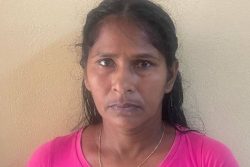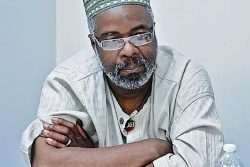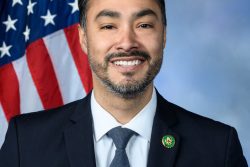By Harry Hergash
Harry Hergash, a graduate of the University of Guyana, taught at the Annandale Government Secondary from 1964 to 1969. He immigrated to Canada in 1974.
During the Indian indentureship scheme which lasted officially from 1838 to 1917, approximately 240,000 individuals were recruited in India and brought to Guyana (then British Guiana) to work as labourers on the expatriate-owned sugar plantations. In his 1883 book, The Colony of British Guyana and its Labouring Population, H.V.P. Bronkhurst writes “All immigrants in the Colony are of course looked upon as Coolies or day labourers, and so they are, for on their arrival they are expected to go and work in the cane fields with their shovels, hoes, and cutlasses, which they readily do, thinking that it is their ta lei ezhutter or ta lei vidi, i.e. destiny. In their own native land they were doctors or physicians, clerks, schoolmasters, teachers, sirdhars, shop or bazaar keepers, etc., but these caste or trade distinctions they are compelled to lay aside for a time in British Guiana, and turn out with a good will to do the work expected of them by their employers who are no caste people”.
H.V.P. Bronkhurst was a Wesleyan Minister who was born in Ceylon (now Sri Lanka) of a Dutch father and a Ceylonese mother. He was brought from Ceylon to Guiana in 1862 by the Wesleyan Church to christianize the mainly Hindus and Muslims indentured Indian workers. Despite his inability to gain more than a few converts and his request to leave the colony, he was instructed to remain. He passed away in 1895. His writing on the Indians is based on his personal knowledge of the history and culture of these workers.
In commemoration of May 5, 2023, the 185th Anniversary of the Arrival of Indians in Guyana, this article highlights the story of Pandit Lakshman Prasad, an indentured Indian. He was the father of two history making, Guyanese-born sons, eminent journalist and acclaimed correspondent of several foreign news agencies, Chander Paul Prasad also known as Paul O’Hara, and highly respected Hindu priest, social activist, and PPP politician Pandit Chander Sama Prasad, Member of the Legislature in 1953, and Senator during the period 1961- 64. The story of Pandit Lakshman Prasad who was indentured to Plantation Lusignan in 1898 gives credence to the view that at least some of the indentured Indian labourers were highly educated. It should be noted that over the years the last name of the father and sons has morphed into Persaud in the public records.
An article by Ms Ameena Gafoor “CHANDR PAUL PERSAUD: Conversations with Ameena Gafoor”(https://www.theartsjournal.org.gy/document/paulohara.pdf) provides a valuable glimpse of his birth: “Pandit Lakshman Persaud, a Brahmin (b. 1859) hailed from Amritsar, home to the Sikhs’ holiest shrine, the Golden Temple”. And from his son Pandit Chander Sama we learn of his death. Shortly after his passing, Pandit Chander Sama who was accompanying his father on board the (ship) S.S. Orna to India, compiled and published a Hindu Prayer book titled VEDIC PRAYER with the notation “In memory of Pandit Lakshman Prasad who died in the middle of the Indian Ocean on his return voyage to Free India … on February 5th 1949”. In Ms Gafoor’s article, his son Chander Paul is quoted as saying, “His (Pandit Lakshman’s) desire was to be cremated and there was no provision for cremations in the colony. However, the ship went to South Africa first and one day after it sailed from there, he passed away and was given a sea-funeral”.
After completing his indentureship at Plantation Lusignan, Pandit Lakshman moved to Buxton Village and this is where he and his wife Subhag had five children – Chander Paul, Chander Sama, Lilah (a girl known as Lurlene), Narine, and Harry, known as Cyril or CP. In Buxton, Pandit Lakshman did farming and served as a Pandit (Hindu Priest). It was reported that often after he performed a religious service as a Pandit at the home of a devotee and received a fee (dakshina), he would give away the money to little children he met on his way home. A similar practice was continued by his son Pandit Chander Sama who gave his fees to charity.
Pandit Lakshman grew up at a time in India when two revolutionary movements were gaining momentum: the Arya Samaj, founded in 1870 by Swami Dayananda; and the formation of the Indian National Congress (INC) in 1885. The former offered an egalitarian, reformed version of Hinduism that took the religion back to its origin in the Vedas and denounced the prevailing caste system and other social ills in the society. The latter promoted nationalism and demanded political independence from Britain. With Arya Samaj, emphasis was placed on social activism and many of the leading followers were prominent members of the INC. These likely had great influence on young Lakshman Prasad as a university student in the Punjab. The following quote from Chander Paul in Ameena Gafoor’s article is telling: “ In 1912, my father was part of a group that collected money for the private prosecution of the estate manager at Lusignan estate, R.E. Brassington, who was alleged to have shot a male labourer. Workers marched with this labourer to the Public Hospital Georgetown on a khatya (narrow canvas bed) and marched back with him to Lusignan where he died. The estate manager won the case on account of lack of evidence. He was a Member of Parliament and Mayor of the City. My father was banned (for life) from entering any sugar plantation in the colony.”
Over the years, Indian Missionary and revolutionary political activist Bhai Parmanand has been credited as the founder of Arya Samaj in Guyana. However, an article on an Indian government website states that “In 1910, Bhai Parmanand visited Guyana which was then the center of the Arya Samaj movement in the Caribbean…” In other words, he met an already existing movement. Based on his prior missionary work in South Africa and then coming to Guiana in 1898, it seems credible that Pandit Lakshman Prasad was in fact the founder of Arya Samaj South America, as clearly stated in the obituary in the Prayer book published in the latter part of 1949 or early 1950.
Although documentation is scant, it appears that Pandit Lakshman Prasad was more than a typical Indian indentured immigrant who worked as a manual labourer at Plantation Lusignan. Based on his son, Pandit Chander Sama’s account, Pandit Lakshman attended university in Lahore (then part of India). Before coming to Guiana (in 1898) heserved as a Vedic Missionary in South Africa. In Guiana he continued to spread the Arya Samaj movement, and in addition, was a revolutionary Indian nationalist who went to San Francisco (California, USA) to be attached to the Ghadar Party. This Party was founded by revolutionary Indian expatriates who were living and working on the West Coast of the United States and Canada with the objective of overthrowing British rule in India through a revolution as did the Americans in 1776. Anger, discontent and resentment with British rule were growing among these workers, mainly Punjabis from around 1904. The Party was established finally in 1913. It then spread to India and Indian diasporic communities around the world. In a May 13, 2018 article in the Guyana Times, Ravi Dev writes “The journalist, Chandra Paul Persaud popularly known as Paul O’Hara once told me that the Ghadar newspaper was smuggled into then British Guiana”. Prior to his passing, this information was communicated to me also by Mr. Rampersaud Tiwari, a prominent Buxtonian and a friend of the family of Pandit Lakshman Prasad. As I conclude, it is not surprising that this fervent Indian nationalist wanted to return and be cremated in “free India.”
The stature of Pandit Lakshman Prasad is captured in this obituary which is included in his son, Chander Sama’s Prayer book: “Pandit Lakshman Prasad of Buxton, E.C. Demerara who died on his return trip to Free India is the founder of Arya Samaj South America. He came to British Guiana late in the nineteenth century. He was born in Punjab, India, and received his education in Lahore (then part of India). Leaving University, he visited South Africa on two occasions, once as a labourer and then as a Vedic Missionary. Later he went to San Francisco, attached to the Ghadar Party. During his lifetime in British Guiana, he officiated at 197 seven-day functions which include Bhagwats, Veda Yajhas, and similar ceremonies. He also officiated at more than 35000 (sic) yet other religious functions in British Guiana, 128 in South Africa, and 17 in India.”






